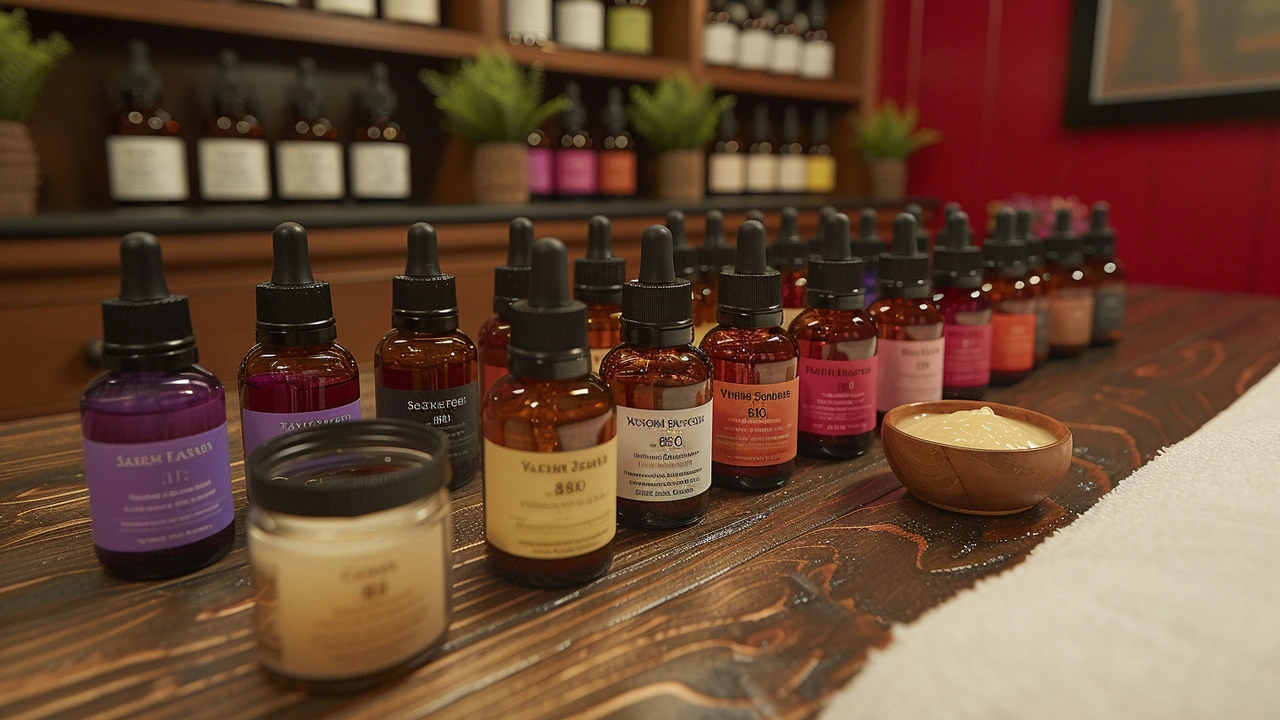Why Intimate Massage is Essential for a Healthy Relationship

Relationship Touch Calculator
Estimate Your Relationship Benefits
Based on research showing 30% cortisol reduction with regular massage and 47% higher relationship satisfaction in couples who practice weekly touch.
Most couples know that date nights and deep conversations matter. But how many realize that something as simple as a 10-minute massage can rebuild trust, lower stress, and reignite closeness-without saying a word?
The Science Behind Touch
Human skin is wired for connection. When you touch someone you care about, your body releases oxytocin-the same hormone that bonds mothers to babies. A 2023 study from the University of Miami found that couples who gave each other regular massages reported a 30% drop in cortisol, the stress hormone, within just two weeks. That’s not just relaxation. That’s biological healing.
Intimate massage isn’t about sex. It’s about presence. When your hands move slowly over your partner’s shoulders, back, or feet, you’re not just touching skin. You’re signaling: I see you. I’m here. You’re safe. This kind of non-verbal communication is often more powerful than words, especially when tension builds and words start to feel hollow.
How It Breaks Down Barriers
Think about the last time you felt disconnected from your partner. Maybe you were both exhausted. Maybe you were stuck in a cycle of complaints and silence. In those moments, physical distance grows faster than emotional distance.
Intimate massage interrupts that pattern. It forces you into the same space, at the same pace. No phones. No distractions. Just two bodies, breathing together. A 2022 survey of 1,200 long-term couples by the American Psychological Association showed that those who practiced weekly intimate touch-massages, hand-holding, cuddling-were 47% more likely to rate their relationship as "very satisfying."
It’s not magic. It’s mechanics. When you hold someone’s hand while massaging their calves, you’re rebuilding neural pathways for safety. Your partner’s nervous system learns: This person doesn’t just want to fix me-they want to be with me.
It’s Not About Technique
You don’t need to be a licensed therapist. You don’t need oils, candles, or spa music. You just need your hands and a willingness to slow down.
Start simple. Ask your partner: "Can I give you a 10-minute back rub?" Even if they say no at first, keep asking gently. Many people resist because they feel awkward or unworthy of care. Your persistence says: You deserve to be held.
Use your palms, not your fingers. Press just enough to feel resistance, then ease off. Don’t try to "fix" knots. Just move with rhythm. Let your hands follow the curve of their spine. Pause at the shoulders. Circle the base of the neck. If they sigh, you’re doing it right.
And here’s the secret: Let them massage you too. Vulnerability is contagious. When you let someone touch you without expectation, you give them permission to be soft. That’s where real intimacy lives-not in grand gestures, but in quiet, repeated acts of care.

What It Replaces
Too many couples substitute sex for connection. But sex without touch doesn’t build closeness-it often masks distance. A 2024 study in the Journal of Sexual Medicine found that couples who prioritized non-sexual touch (like massage) over frequent sex reported higher emotional satisfaction, even if their sexual frequency dropped.
Why? Because intimacy isn’t a transaction. It’s a language. And massage speaks fluently.
When you massage your partner, you’re not asking for anything in return. You’re not checking a box. You’re offering presence. That’s why it’s so healing. In a world that rewards productivity, giving someone your time-without agenda-is radical.
Common Misconceptions
Some people think intimate massage is just a prelude to sex. It’s not. In fact, the most powerful moments happen when you *don’t* move toward sex. When you stop at the massage. When you just hold their hand afterward and say nothing.
Others believe it’s only for romantic couples. But it works for long-term partners, divorced parents co-parenting, even adult siblings reconnecting. The principle is the same: touch without expectation rebuilds trust.
And no, it’s not "weird" or "too intimate" if you’re not used to it. That’s just fear talking. Most people who try it for the first time say the same thing: "I didn’t realize how starved I was for this."

How to Start Today
You don’t need a plan. You just need to begin.
- Ask: "Would you like a quick massage before bed?" Keep it light. No pressure.
- Set a timer for 10 minutes. This takes the pressure off-both of you know it’s not endless.
- Use your hands. No oils needed at first. Just clean, warm hands.
- Focus on the back, shoulders, or feet. These areas hold the most tension and respond best to gentle pressure.
- Afterward, sit quietly. Hold hands. Say nothing. Let the silence be the reward.
Do this once a week for a month. Then ask: "How did that feel?" You might be surprised by the answer.
What Happens When You Stop
Relationships don’t die from big fights. They die from small absences. Missed touches. Forgotten hugs. Silent nights.
When couples stop giving each other massages, they often don’t notice the shift until it’s too late. The warmth fades. The laughter becomes rare. The bed feels too big.
That’s not because love disappeared. It’s because the language of touch got quiet. And love, like any language, withers without use.
Intimate massage is one of the simplest, most effective tools to keep that language alive. It costs nothing. Takes minutes. And changes everything.
It’s Not a Fix-It’s a Foundation
You can’t massage your way out of abuse, dishonesty, or neglect. But if your relationship is otherwise healthy, massage becomes the glue. It’s the daily ritual that says: We’re still here. We still choose each other.
It’s not about perfection. It’s about consistency. One week you’ll be tired. The next, your partner will be in pain. That’s okay. Do it anyway. Even if it’s just two minutes. Even if it’s silent. Even if your hands shake.
Because touch doesn’t need to be grand to be powerful. It just needs to be real.
Is intimate massage the same as erotic massage?
No. Intimate massage is about emotional connection, not sexual arousal. While erotic massage focuses on stimulation and pleasure with sexual intent, intimate massage is slow, non-goal-oriented touch meant to build safety and closeness. The intention changes everything.
What if my partner doesn’t want to be touched?
Start small. Ask if they’d be open to just holding hands for 30 seconds before bed. Or gently placing a hand on their shoulder while they’re sitting. Respect their boundaries. Don’t push. Sometimes, touch feels threatening if someone has experienced trauma, neglect, or pressure in the past. Patience and consistency matter more than frequency.
Can I do this if I’m not good with my hands?
Yes. Technique matters less than intention. Even clumsy, awkward touches carry meaning if they’re given with care. Your partner isn’t looking for a spa experience-they’re looking for you. Warmth, presence, and attention are far more valuable than perfect strokes.
How often should we do this?
Once a week is ideal to build the habit. But even once every two weeks makes a difference. The goal isn’t to turn it into a chore-it’s to make it a natural part of your rhythm. If you miss a week, don’t stress. Just start again. Consistency over perfection.
Does it work for same-sex couples or non-traditional relationships?
Absolutely. Intimate touch has no gender, orientation, or relationship structure. What matters is mutual consent, emotional safety, and the willingness to be vulnerable. Studies show the same benefits across all types of long-term partnerships, regardless of gender or sexual identity.





